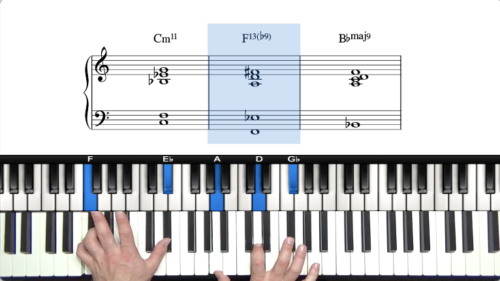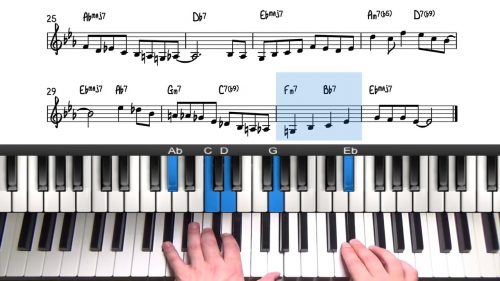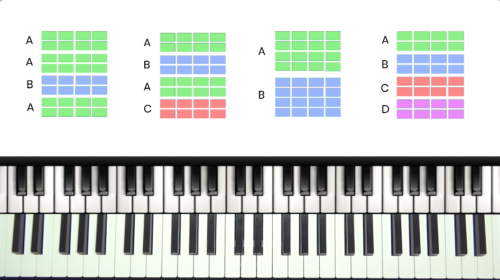Moon River Harmonic Analysis
In this lesson we conduct a harmonic analysis of the tune Moon River to understand how each chord functions in relation to the key of C Major.
After studying the previous 2 lessons in this course we now have an understanding of common voicings and progressions in the key of C Major and we will use this information to gain a deeper understanding of the harmony in Moon River.
Harmonic Relationships
We will identify the common progressions such as 251 and 36251s which help us to group together multiple bars into easy-to-remember chunks of harmonic information.
We will also analyse progressions built around the diatonic 7th chords of C major, for example 251 to the relative minor, 251s to the IV chord and other common harmonic cadences.
Practice Tips
-
Analyse the form of the tune to understand which sections are repeated. This tune follows an ABAC form and so the A Section repeats twice.
-
Annotate the score with numerical harmony to help to to memorise and internalise the function of each chord in the tune.
-
Group together blocks of harmony such as 25s, 251s, and 36251s to speed up the memorisation of the harmony.







This a great lesson! I remember in one of the earliest seminars on this site, Memorizing Jazz Standards by Tuomo, he mentioned it was all about where the chords resolved to. That always stayed in the back of my head but I could never fully quite grasp what it meant until this lesson which really hit the nail on the head. This also clarified to me why many times certain notes and chords can often have keys outside of the songs main diatonic scale.
I hope to see more analyses on other Jazz standards in this fashion. Keep it up!
Hello Hayden, i’m memorizing the chords of this tune, understanding the harmony, and i have a question on the 4-7-3-6-2-5-1.
Is this progression always a following of 2-5 of 3, 2-5 of 2 and 2-5-1 (of 1). Or am i wrong to see it that way, seeing this as 4-7-3-6-2-5-1 could in my opinion mislead me, because of the dominant nature of the chords.
Cheers, Guillaume
Hi Guillaume,
Great question.
I would personally look at that progression as 4-7-3-6-2-5-1 in the key of C major, and the 4 (F#-7) is actually a #4 which creates the perfect 251 into E-, or 251 into the 3 chord as you say. We could also see the F#-7 related to the C Lydian Mode where F# as the 4th degree of the scale.
Whether you look at this as “4-7-3-6-2-5-1” or as “2-5 of 3, 2-5 of 2 and 2-5-1 (of 1)” – it’s basically 2 ways of looking at the same thing. We are trying to describe the music and the harmony with words and language which is always an impossible task!
This is a very important point.
For any chords in a 251 progression, they are a 5th apart, and so we can play them all as dominant chords. The same with the 36251 progression, all chords are a 5th apart.
It’s very common in jazz piano to change the minor chords in 251s and 36251s into dominant chords.
Please check out these lessons where I explain this in more detail:
pianogroove.com/jazz-piano-lessons/eb-major-diatonic-harmony/ (chapter 5)
pianogroove.com/jazz-piano-lessons/beautiful-chord-progression/ – in this progression we play the 4, 3, 2, and 5 chords as dominant chords, when diatonically-speaking, in the key of Eb major, the 4 chord would be major (Abmaj7), and the 2 and 3 chords would be minor (F-7 and G-7).
Dominant chords lend themselves well to texture and colour through adding the alterations b9/#9/#11/#5 and so we commonly substitute them in jazz piano to create more interesting sounds and progressions.
Please check out those lessons and it should help you to think of chords in a more flexible way.
If you have any further questions just let me know.
Have fun exploring this stuff!
Cheers,
Hayden